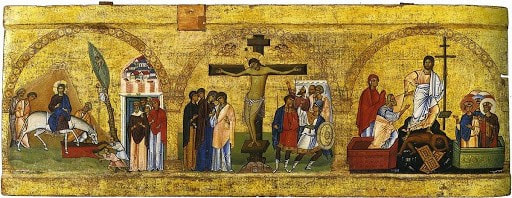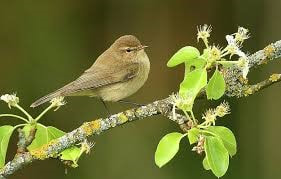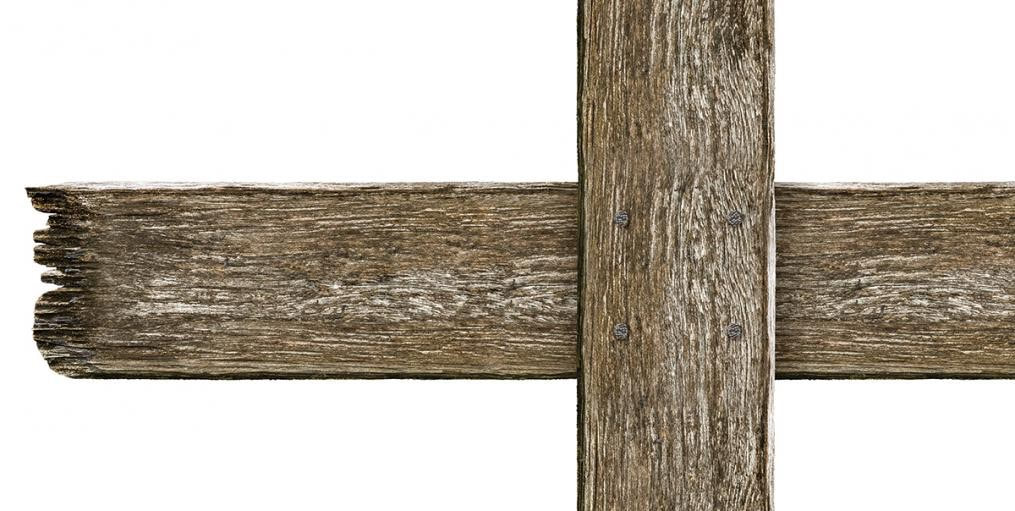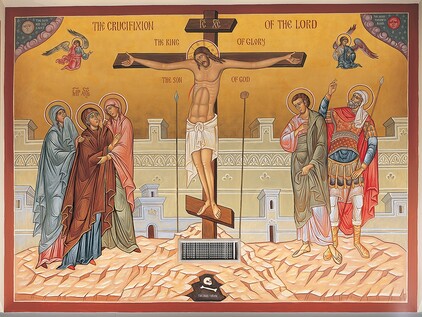|
I wonder if this sounds familiar to you… We were travelling by car, and I was trying to get our passenger to appreciate our native countryside. However, after a quick look out of the car window, the passenger continued to scroll on a mobile phone. Or how about this one; “Just listen to this beautiful piece of music I have discovered”, I said. After little more than 10 seconds the monologue recommenced! C S Lewis talks about ‘The Secret Thread’ that common quality that makes you love something, though you cannot put it into words; but most of your friends cannot see it at all. They are looking at the same thing that you are looking at but there is a gulf between what you are seeing and what they see. I think there is a parallel between the examples above and the events recorded in the gospel reading for today, Palm Sunday. I am sure we are all very familiar with the images portrayed in our icons, that accompany the gospel accounts of our Lord’s entry into Jerusalem (John 12: 1-18). Jesus entering Jerusalem riding on a donkey (v 14-15), How the crowds, ‘when they heard that Jesus was coming to Jerusalem, took branches of palm trees and went out to meet Him, and cried out: “Hosanna! [which literally means “Save us, Lord!”], ‘Blessed is He who comes in the name of the Lord! ’The King of Israel!””. These people are they who had seen, or heard, how Jesus had called Lazarus from out of his tomb (v 17-18). “Save us, Lord!”, for years the people had been languishing under the yoke of Roman occupation, soldiers everywhere, constant threats of violence and heavy taxes. They were tired weary and wanting their freedom! And here, on a “red carpet” of Palm branches rides Jesus, the liberator, the man who could raise up an army and free the people! The freedom that is obtained with spears, swords and bloodshed. The crowd believed that they were on the threshold of a great battle that would change everything. As with the examples I gave earlier, the people just could not see the ‘Secret Thread’ the true beauty that linked all that they had seen and heard. Yes, Jesus would free people. Yes, Jesus was going into battle, but not to fight flesh and blood. The people were looking and not seeing, hearing but not listening. We have each endeavoured, in whatever way we can, to make a Lenten effort. And we may well feel tempted at this time.; tempted by hunger, tempted by sloth and a reluctance to go to church, to stand in prayer, tempted to gratify ourselves with worldly delights. We may even feel tempted in the same way that those who cheered Jesus felt tempted; tempted to demand our freedom from everything and everyone that we feel oppresses us! As our Lord rides into Jerusalem, he faces temptation as never before – the crowds cheering him and begging for him to lead them into battle against the Roman occupying forces. But He is not that kind of leader. He is no earthly King. He is the heavenly King. The like of which the world has never known. A humble king, crowned with thorns, spat on and mocked, enthroned on a cross. This is the victory of Palm Sunday! The humble king who rides into Jerusalem, tempted in every way, keeps his eyes fixed on the Cross that stands before him. In the same way that the heavenly King entered into Jerusalem, today, Christ prepares to enter our hearts. To enter, if invited, and to fill us with his power, his strength, his love to give us the victory and freedom we long for; to invite us to follow him and to lay down our lives as he did: for our brothers and sisters, our neighbour even our enemies. Fr Julian Today the grace of the Holy Spirit has gathered us together,
and we all take up Thy Cross and say: Blessed is He that comes in the Name of the Lord; Hosanna in the highest.
0 Comments
As I sit reading and preparing this homily, I cannot help but smile as the song of a Chiffchaff drifts through the open window. The Chiffchaff is perched high in a neighbours tree. I always find trees beautiful, but at this time of the year, with their new leaves, delicate blossom and resident wildlife, they have a very special beauty. Of course, the books I am looking at are inextricably linked with trees. These links go far beyond the manufacture of paper! For example, ‘Folio’, which today refers to a book of very large size, is from the Latin for ‘leaf’, which is itself a term for a book’s pages. Trees are the oldest living things on earth and, interestingly, they are mentioned in the Bible more than any living thing other than God and people. There’s a tree on the first page of Genesis, the first Psalm, the first page of the New Testament, and the last page of Revelation. Whether it is the fall, the flood, or the overthrow of the Pharaoh, every major event in the Bible has a tree marking the spot.
Again, the texts of our service abound with tree references. The following are quotes from Matins for this Sunday.
Today, the third Sunday (and middle) of Great Lent the Church sets before us the cross of Christ; a cross made of wood on which the carpenters’ son was nailed. Why do we Exalt the Holy Cross, today in the middle of the Fast? “We venerate the Cross of Christ, by which the power of the demons and the deceit of the devil were destroyed.” These are the words of St John of Damascus and, following this tradition, the Orthodox Church has consistently celebrated the cross as an emblem of victory; just as Melito of Sardis proclaimed, “Just as from a tree came sin, so also from a tree came salvation. By the cross death is destroyed, and by the cross salvation shines; by the cross the gates of hell are burst, and by the cross the gates of paradise are opened. . . . The cross is the destroyer of hell” St Athanasius of Alexandria declared, “His trophy over death was the Cross.” And later, “The death which they thought to inflict as a disgrace was actually a monument of victory against death itself.”, “The Cross of the Lord is a sign of victory over death.” Similarly, Rufinus observes, “The death to which He submits is going to result in the despoiling of death.” Maximus the Confessor affirms, “By being conquered deliberately, He conquered him who hoped to conquer and snatched the world from his dominion.” The contemporary theologian and hierarch Metropolitan Kallistos Ware comments, “What has been fulfilled? We reply: The work of suffering love, the victory of love over hatred. Christ our God has loved his own to the uttermost” (The Orthodox Way). Mel Gibson’s 2004 film The Passion of the Christ, is well known for its depiction of the brutality and gore of Christ’s punishment and crucifixion, an attitude common to many western Christian paintings. Orthodox icons, however, depict not a ‘victim’ but a ‘victor’. Our icons of the crucifixion do not belabour or emphasize the horrors of the suffering. Rather, they show an almost regal dying Christ receiving the dismayed shock of believing onlookers. They show the expression of faith of the Roman centurion who confesses the crucified Christ as “the Son of God” (Matt. 27:54; Mark 15:39). I wonder how it would be if every time we saw a tree, we viewed it as an icon? If every time we saw a tree, we remembered the Cross and the Resurrection, giving thanks for our Lord’s victory? Perhaps then our lives would begin to become the Eucharist that never ends? Fr Julian We venerate Thy Cross, O Master, and we glorify Thy Holy Resurrection
|
Parish Blog
This mainly contains homilies and messages from our priests, although there is some scope to share thoughts and interesting articles which we may want to share with others Archives
October 2022
Categories |




 RSS Feed
RSS Feed